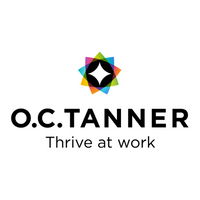How to encourage and incentivise the right workplace behaviour
How employees behave directly affects organisational culture. When leaders turn a blind eye to poor behaviour, a culture can turn rotten. It’s up to organisations to make it clear what’s expected of their employees and follow through to ensure substandard behaviour is called out. Just as important is encouraging and incentivising the right behaviour.
Rewards and benefits professionals have an important role to play here.
1. Recognise the right behaviours
Few reward and benefits professionals would deny the importance of regularly recognising the efforts and achievements of employees. But businesses need to identify which behaviours are to be encouraged and rewarded.
Taking a values-based recognition approach is important as it means that when a person displays behaviours in line with the company’s values, they are recognised even if the results don’t follow. Similarly, only employees displaying the desired behaviours should be recognised and rewarded.
And where possible, organisations should make recognition events and celebrations open to others – peers, managers and even family members – and include tailored rewards and/or symbolic awards.
This not only makes the moment memorable for the recipient, but helps colleagues understand what ‘good’ looks like and so more likely to mirror the behaviours being applauded and rewarded.
2. Encourage peer-to-peer recognition
Recognition shouldn’t just be given by managers. Employees should be encouraged to praise others’ efforts, achievements and behaviours and organisations must put in place technology to ensure this is quick and simple as part of their flow of work. This can even be done via Microsoft Outlook, for example, allowing employees to recognise colleagues with ease. The technology can even prompt the recognition giver to mention which values-centric behaviours their colleague has displayed, ensuring the right behaviours are reinforced.
3. Build recognition into everyday moments
A culture of recognition is only possible when saying “thank you” and explaining the recognition moment happens across the company on a daily basis. To ensure it’s always top of mind, leaders should encourage every meeting to include recognition. Managers can even go one step further and schedule meetings where the only agenda item is recognition. Once again, the recognition must be linked to behaviours considered support the business’ values.
4. Reaffirming company values
Those companies that draw a line dividing which behaviours are and aren’t acceptable and then steadfastly stand by this have the greatest opportunity for nurturing supportive and inclusive workplace cultures.
And when it comes to encouraging desirable behaviours, recognition and reward have crucial roles to play, helping to reaffirm what the company stands for (and indeed, what it does not).
Supplied by REBA Associate Member, O. C. Tanner
Giving teams the integrated tools they need when, where and how they need them.








